Answered step by step
Verified Expert Solution
Question
1 Approved Answer
Problem 11.16 in An introduction to computer simulation methods: Applications to physical systems. Part 2. By Gould. Tobochink. Problem 11.16 Random walk on lattices containing
Problem 11.16 in An introduction to computer simulation methods: Applications to physical systems. Part 2. By Gould. Tobochink.
Problem 11.16 Random walk on lattices containing traps

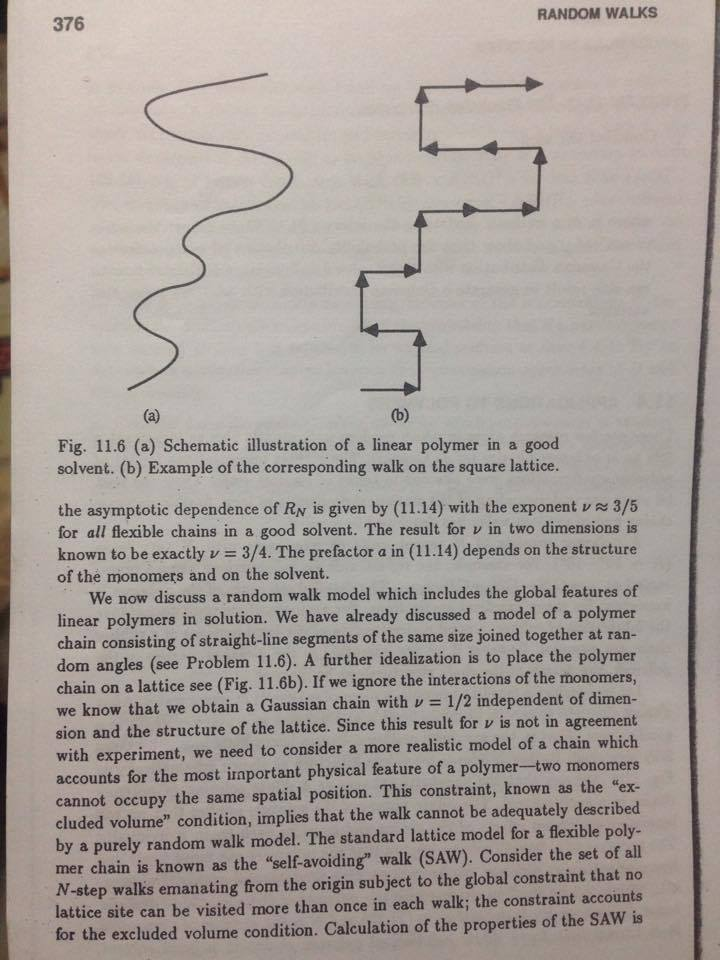

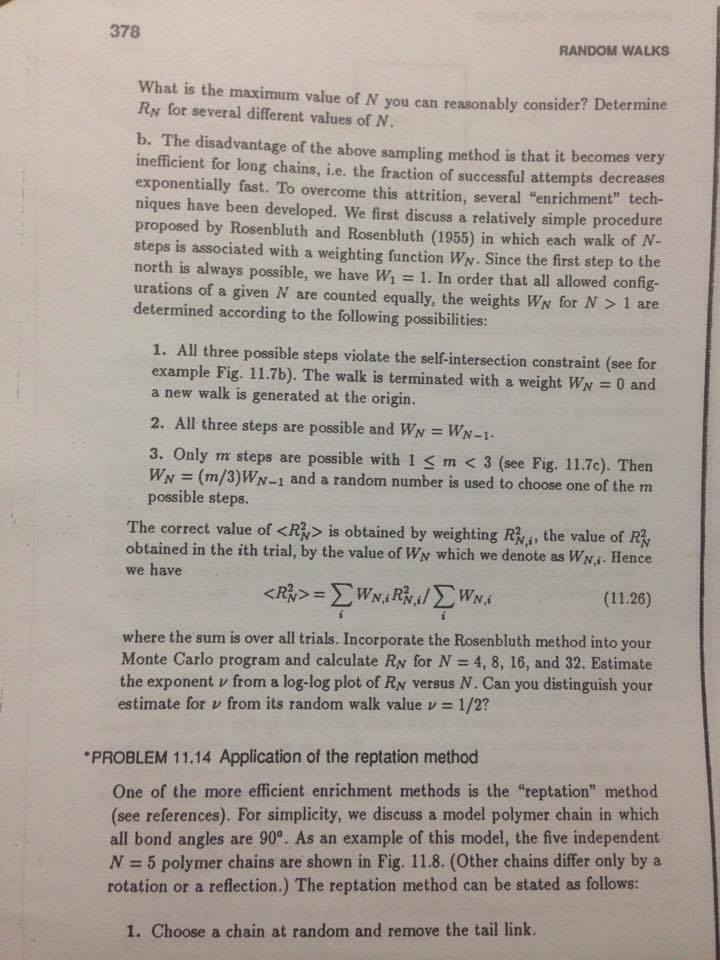
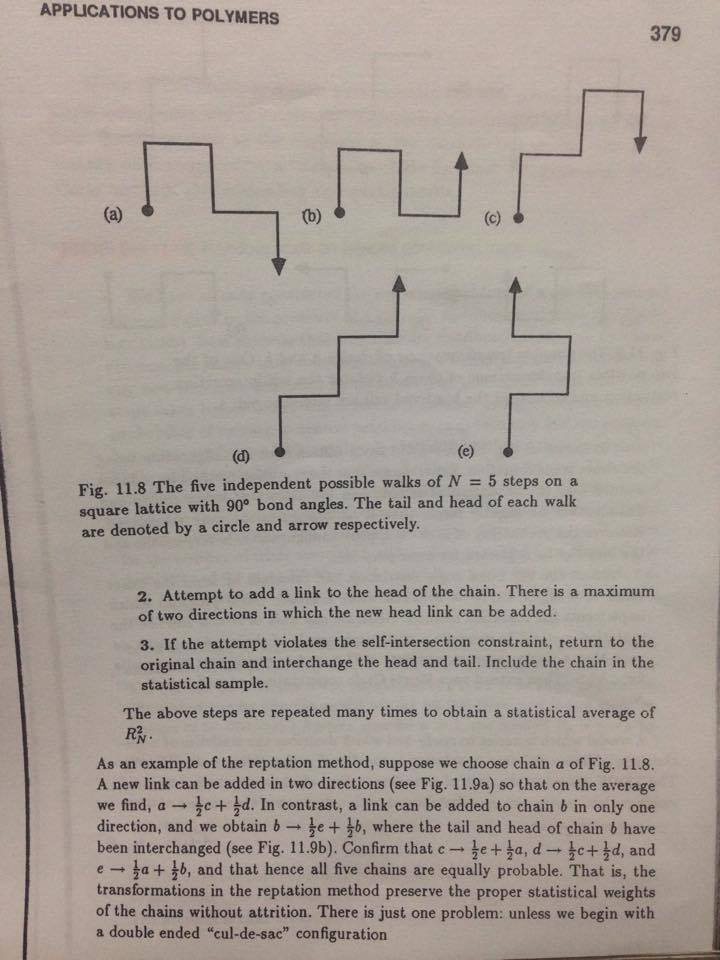

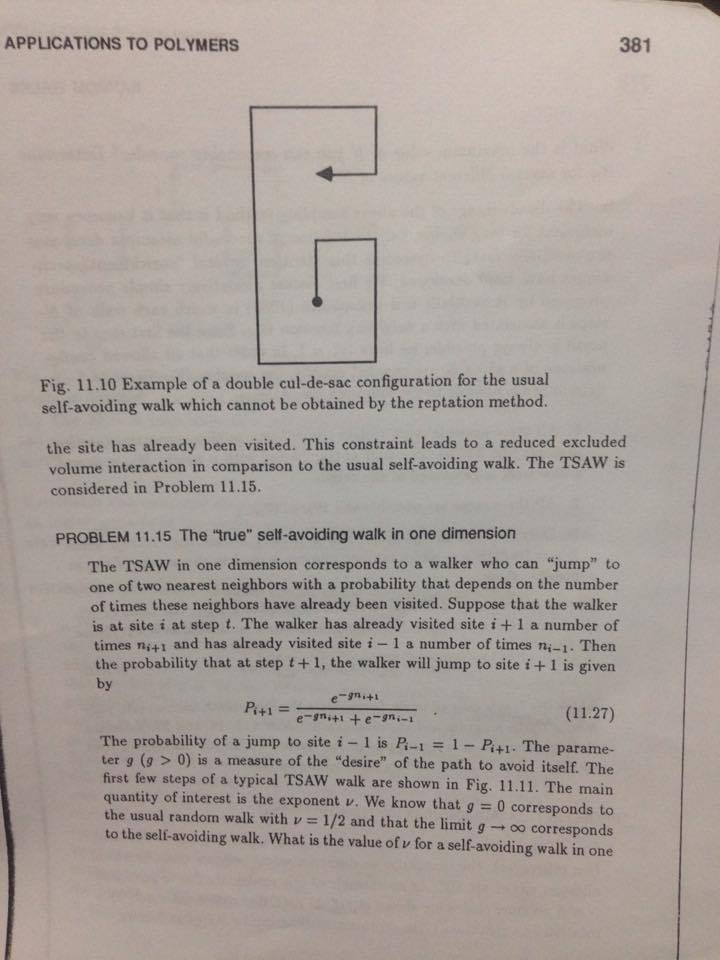

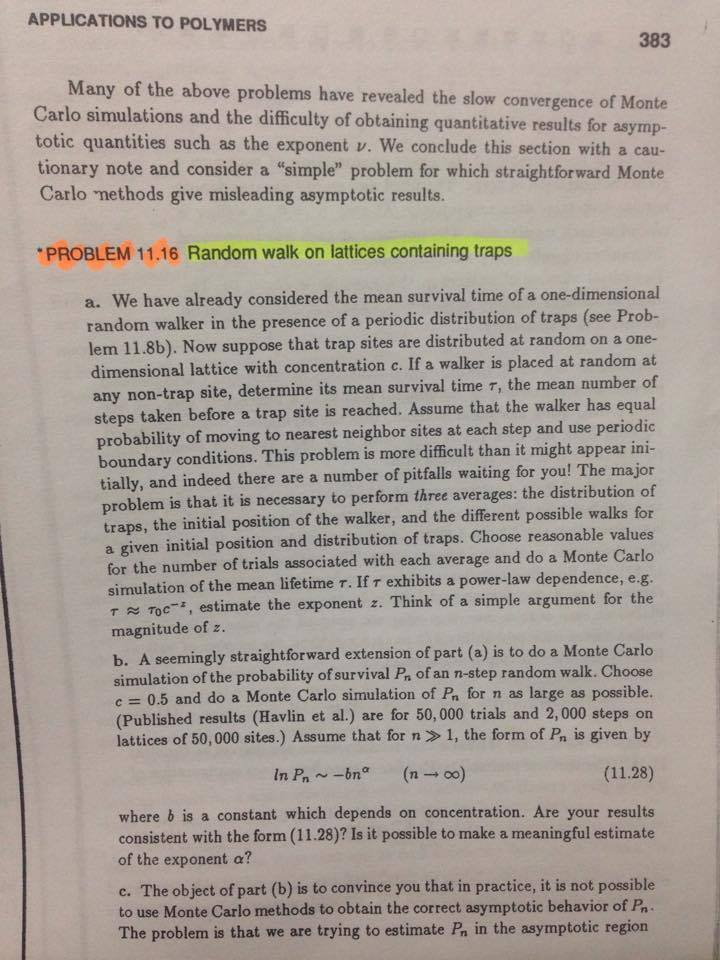
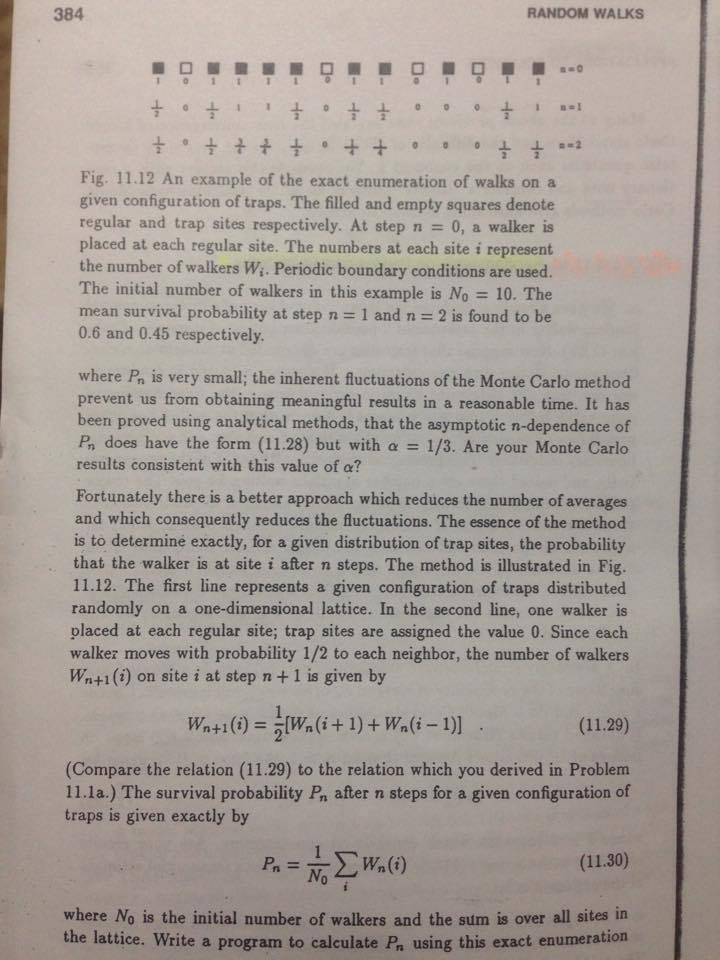
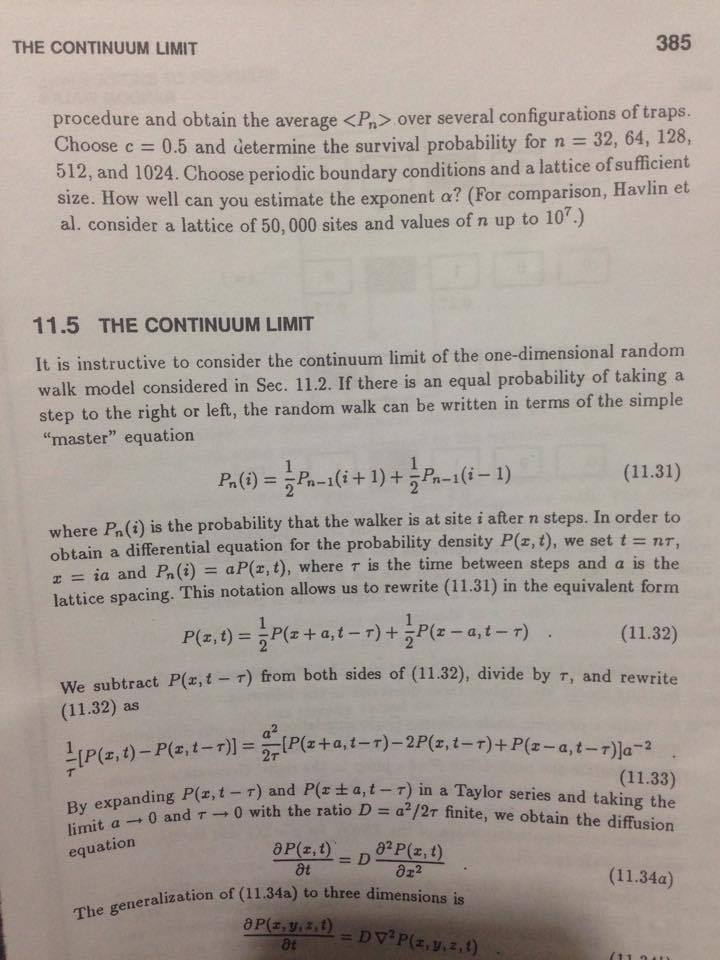
(I need to solve the problem 11.16 in C or C++ language, thanks. )
where ri is a uniform deviate in the interval [0,1J ake many "measure ments" of y and show that the probability distribution of y approximates the Gaussian distribution with mean value 6 and variance 1. Discuss how to use this result to generate a Gaussian distribution with arbitrary mean and variance 11.4 APPLICATIONS TO POLYMERS There are few research areas in which random walk models play as important a role as in polymer physics (cf de Gennes). The earliest investigations (1934) of configurations were phrased in terms of random wa Over the past 50 years our understanding of the statistical properties of long, flexible polymer chains and of random walks has developed in parallel. A polymer consists of N repeat units or monomers with N very large (N 103-105). For example, the repeat unit for polyethylene can be repre- The detailed structure of the polymer is sented as -CH2- CH2-CH2 important for many practical applications. For example, if we want to improve the fabrication of rubber, a good understanding of the local motions of a rubber chain are essential. However if we are interested in the global properties of the polymer, the details of the chain structure can be ignored. Let us consider a familiar example, a piece of spaghetti in warm water. After a short time the spaghetti becomes flexible and behaves as a polymer chain in a good solvent. That is, the spaghetti neither collapses into a little ball or becomes fully stretched. Rather it adopts a random structure as shown schematically in Fig. 11.6. We say that the spaghetti behaves as a dilute solution of polymer chains in a good solvent. The dilute nature of the solution implies that we can ignore entanglement effects of the chains and consider each chain individually. The presence of a "good" solvent implies that the polymers can move freely and hence adopt many different configurations. One fundamental geometrical prop- erty which can be used to characterize the polymer is the rms end-to-end dis tance RN, where RN is defined as in (11.13) and N is the number of monomers. It is known that for a dilute solution of polymer chains in a good solventStep by Step Solution
There are 3 Steps involved in it
Step: 1

Get Instant Access to Expert-Tailored Solutions
See step-by-step solutions with expert insights and AI powered tools for academic success
Step: 2

Step: 3

Ace Your Homework with AI
Get the answers you need in no time with our AI-driven, step-by-step assistance
Get Started


